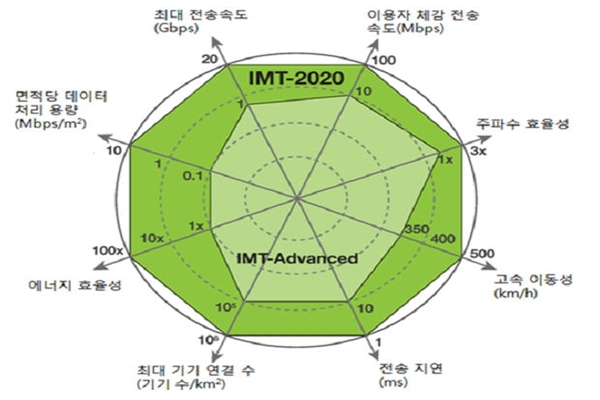Standards of technologies for 5G test service, which were developed by South Korean businesses such as Samsung Electronics, 3 mobile telecommunication businesses and others and foreign businesses, are introduced. They have selected TDD (Time Division Duplex) method within 28GHz super-high frequency bandwidth and have designed standards so that they provide broadband service by being connected to LTE technologies.
Ministry of Science, ICP and Future Planning (MSIP) held ‘4th 5G Strategy Committee’ under Vice-Minister Choi Jae-yoo and examined current situation of 5G technologies and preparation of 5G test services for Pyeongchang Winter Olympics. 18 experts from industries, universities, research institutes, and governments such as mobile telecommunication businesses, manufacturers, small businesses, CEO of 5G forum and others participated in this committee.
Standards of technologies for 5G test service were introduced for the first time at this committee. 28GHz, which is one of high frequency bandwidths that was presented by South Korea s national standards, is going to be used. More than hundreds of super bandwidths are needed to achieve 20Gbps, which is one of visions for 5G performance.
Because it is hard to secure such frequency under 6GHz bandwidth, South Korea has presented 6 high frequency bandwidths including 28GHz as standards for 5G bandwidth. This is a reason why 28GHz is going to be used as frequency bandwidth for 5G test service.
High frequency bandwidth has shorter wavelength than low bandwidth. Because it does not have good radio signals, SW and technologies that support this problem are needed. South Korean and foreign businesses such as Samsung Electronics, 3 mobile telecommunication businesses, Nokia and others are currently working together to develop chips and equipment that support high frequency bandwidth. There is also a rumor that Samsung Electronics is developing its own chips for 5G test service.

TDD method is also going to be used to increase efficiency of frequency. TDD is a technology that puts some time in between and sends and receives data within a same frequency bandwidth. Its efficiency is two times higher than FDD (Frequency Division Duplex) method that uses received frequency and sent frequency separately. Flexibility of TDD is also high as ratio of traffic that is sent through an upper link and a lower link can be adjusted dynamically.
However there is a weakness of low coverage for LTE-TDD method, which is used for 4th generation LTE, compared to FDD method because intensity of an upper link signal decreases compared to output from a lower link. Because it has low diffraction ratio, there is a huge loss of signal when signals run up against obstacles such as buildings and others. Major focus of 5G will be on how a problem like this can be resolved.
As standards for 5G test service are confirmed, it is predicted that discussion about national standards for introduction of 5G is about to take place. South Korea’s businesses and research institutes are going to work with global businesses and are planning to be active in securing standardized patents. To preoccupy markets in advance through successful test services in 2018 and commercialization in 2020, 5G Strategy Committee has decided to work together in pushing forward national standards based on 5G test services and approval of experimental stations for 5G test services and establishing open-type testbeds that are linked to industries, universities, and research institutes.
“Preparations such as selection of standards, allocation of frequencies, development of chip sets and devices and others are taking place without any setbacks.” said Vice-Minister Choi Jae-yoo. “Close cooperation between private businesses and South Korean Government is needed in order to occupy global markets in advance.”
Staff Reporter An, Hochun | hcan@etnews.com